Vibrant Colors and Intricate Designs: South African Traditional Dresses Unveiled
Vibrant Colors and Intricate Designs: South African Traditional Dresses Unveiled
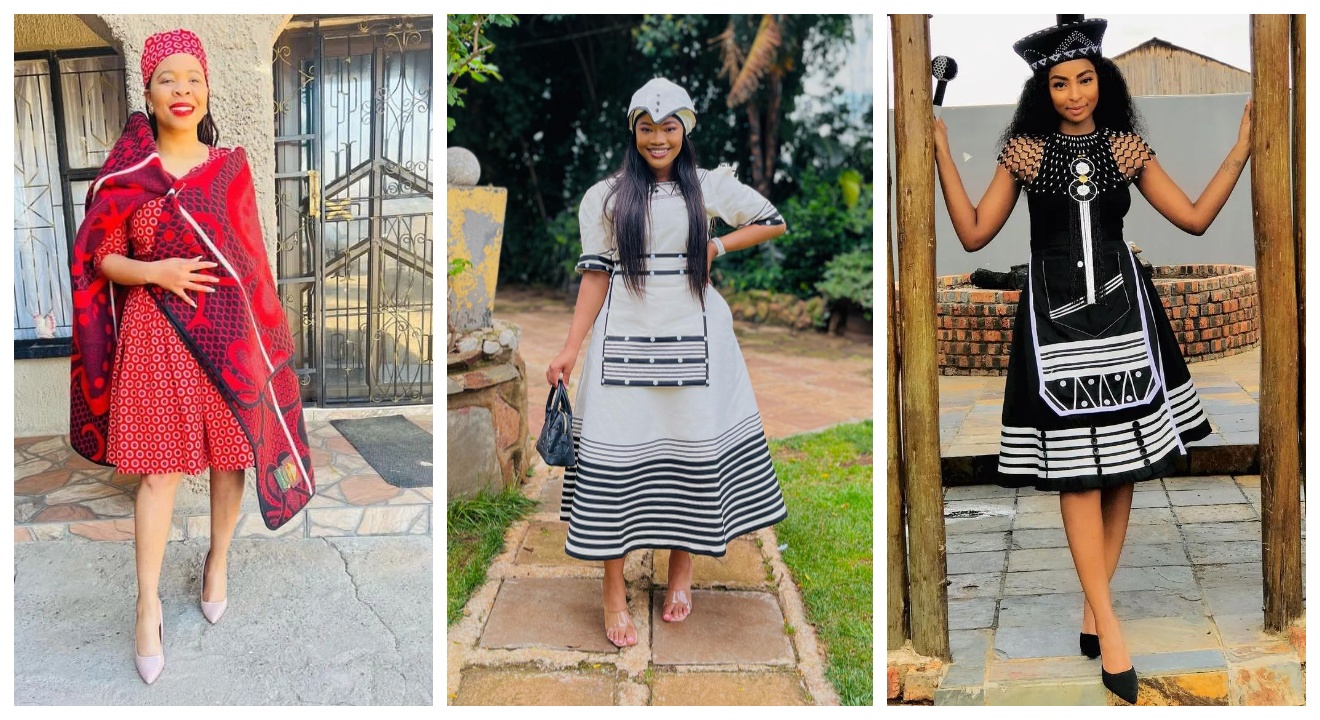
Introduction
South African traditional dresses are a vibrant representation of the country’s rich cultural heritage. With their vibrant colors and intricate designs, these dresses are a sight to behold.
Overview of South African traditional dresses
South African traditional dresses come in various styles and designs, each unique to a specific region or tribe. From the Ndebele to the Xhosa, Zulu, and Sotho, these dresses reflect the diversity and beauty of South Africa’s people. The dresses are often crafted from colorful fabrics such as shweshwe or wax prints, and they feature detailed embroidery and beadwork that tell stories and traditions.
Significance and cultural importance
Traditional dresses hold great cultural importance in South Africa. They are worn during special occasions such as weddings, festivals, and ceremonies, symbolizing the pride and identity of the wearer’s heritage. These dresses not only showcase the country’s artistic skills but also serve as a reminder of unity and respect for traditions passed down through generations. They are a celebration of South Africa’s diverse cultures and a way of preserving its rich history.
Zulu Traditional Dresses
Beautiful, vibrant, and filled with intricate designs, Zulu traditional dresses are a feast for the eyes. Each dress tells a story and holds significance in the rich Zulu culture.
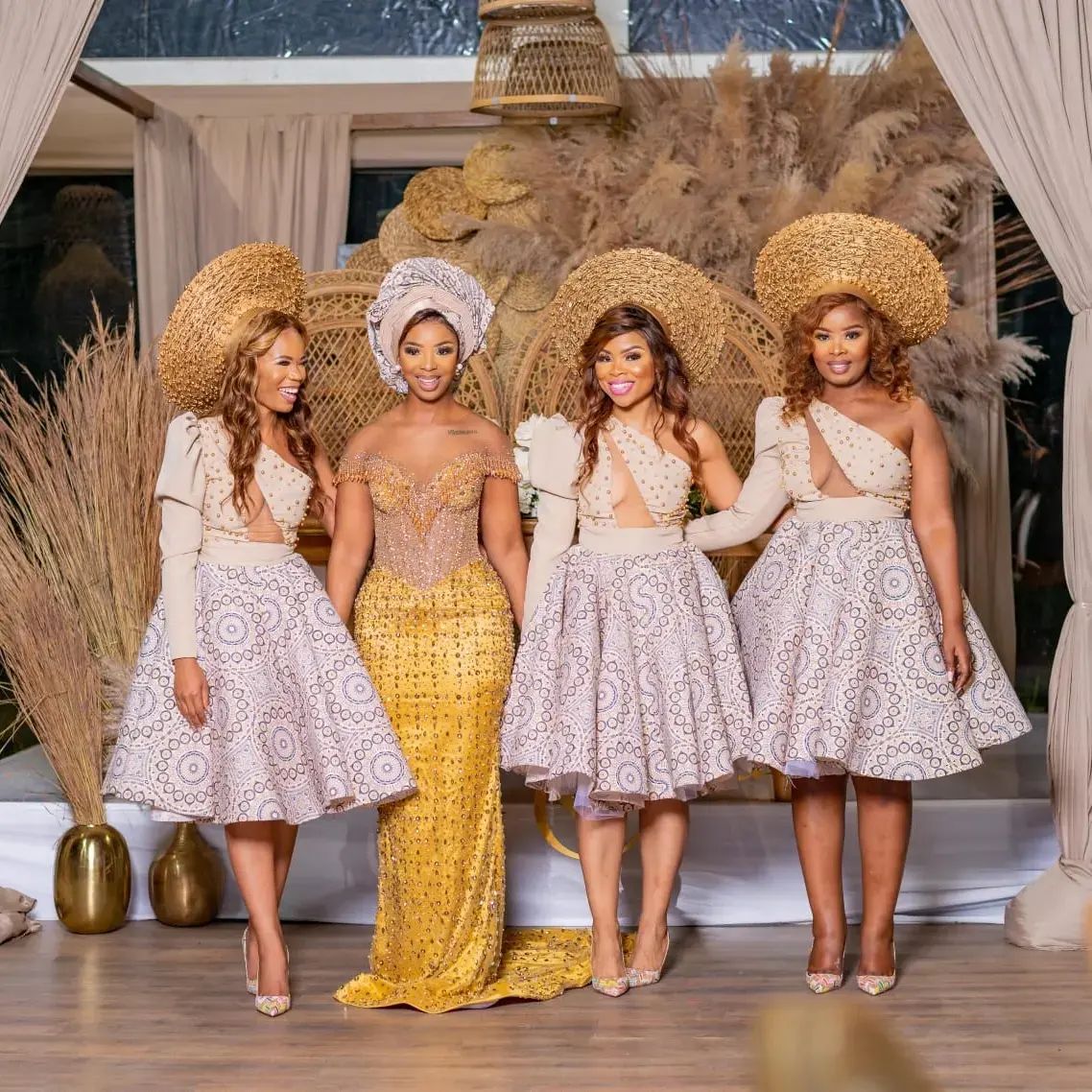
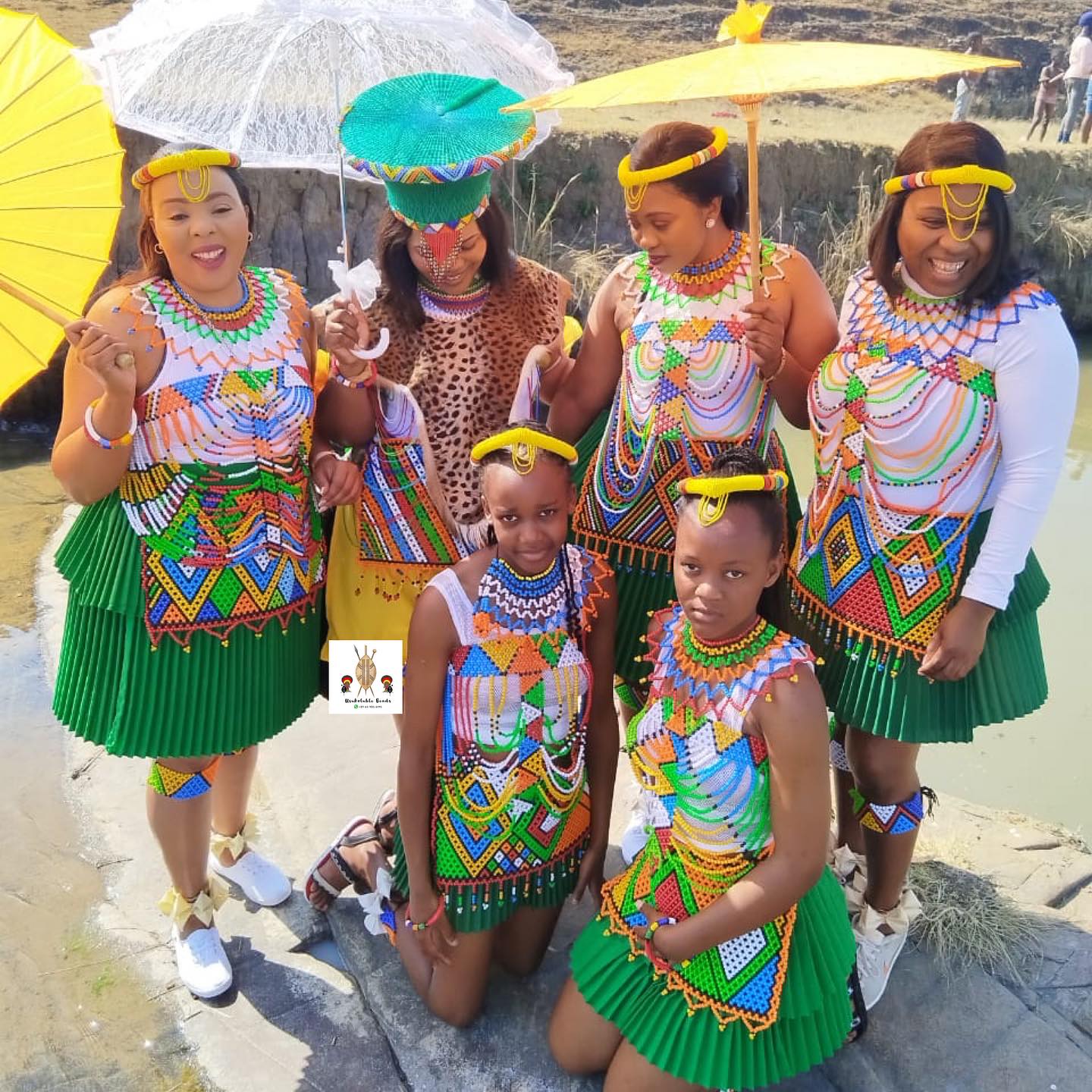
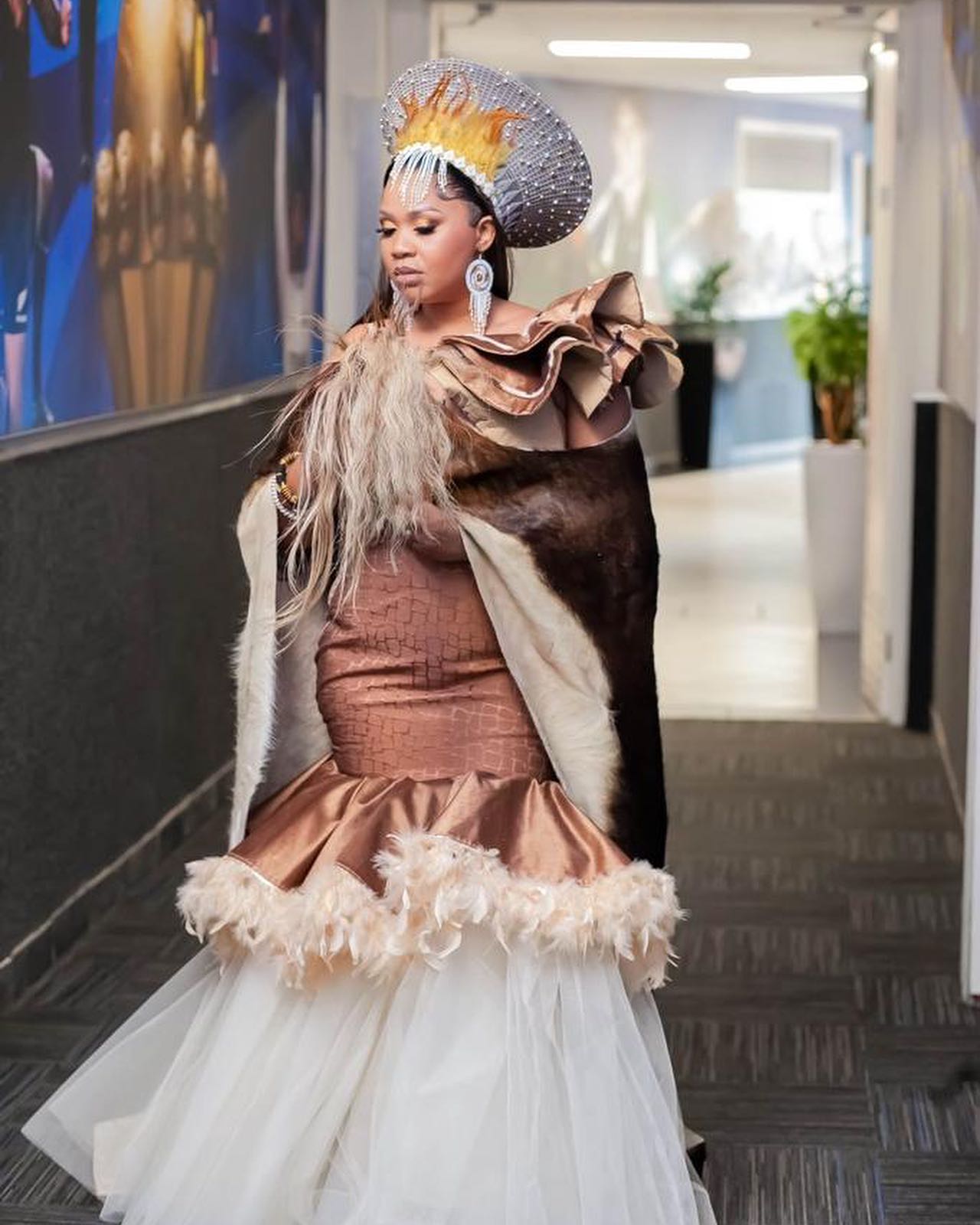
Zulu traditional dress styles and colors
Zulu traditional dresses are known for their bold and vibrant colors. Colors like red, yellow, blue, and green are often used to represent different meanings and emotions. The dress styles also vary, with women wearing isigceya (skin skirts) or isidwaba (fabric skirts) paired with colorful tops.
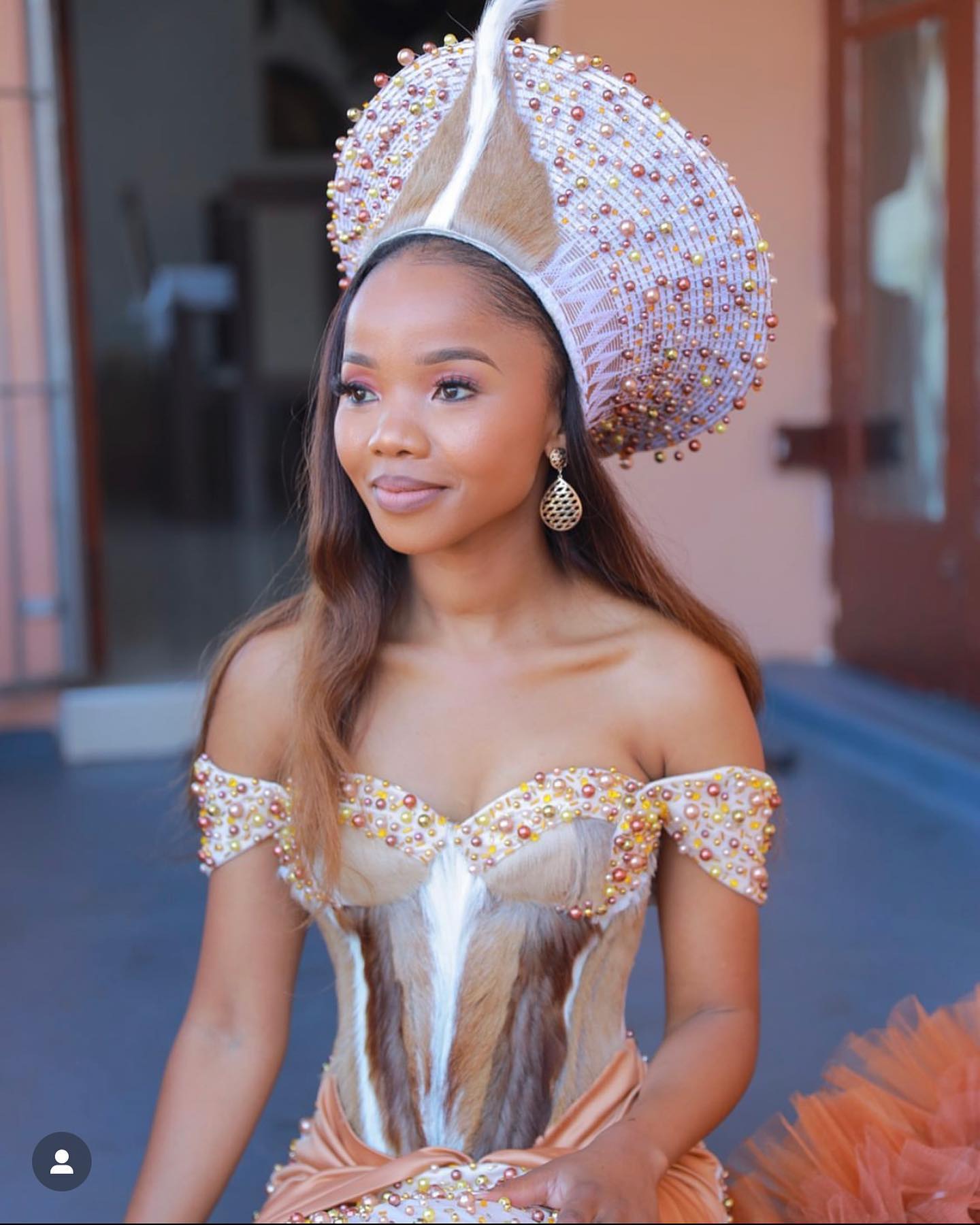
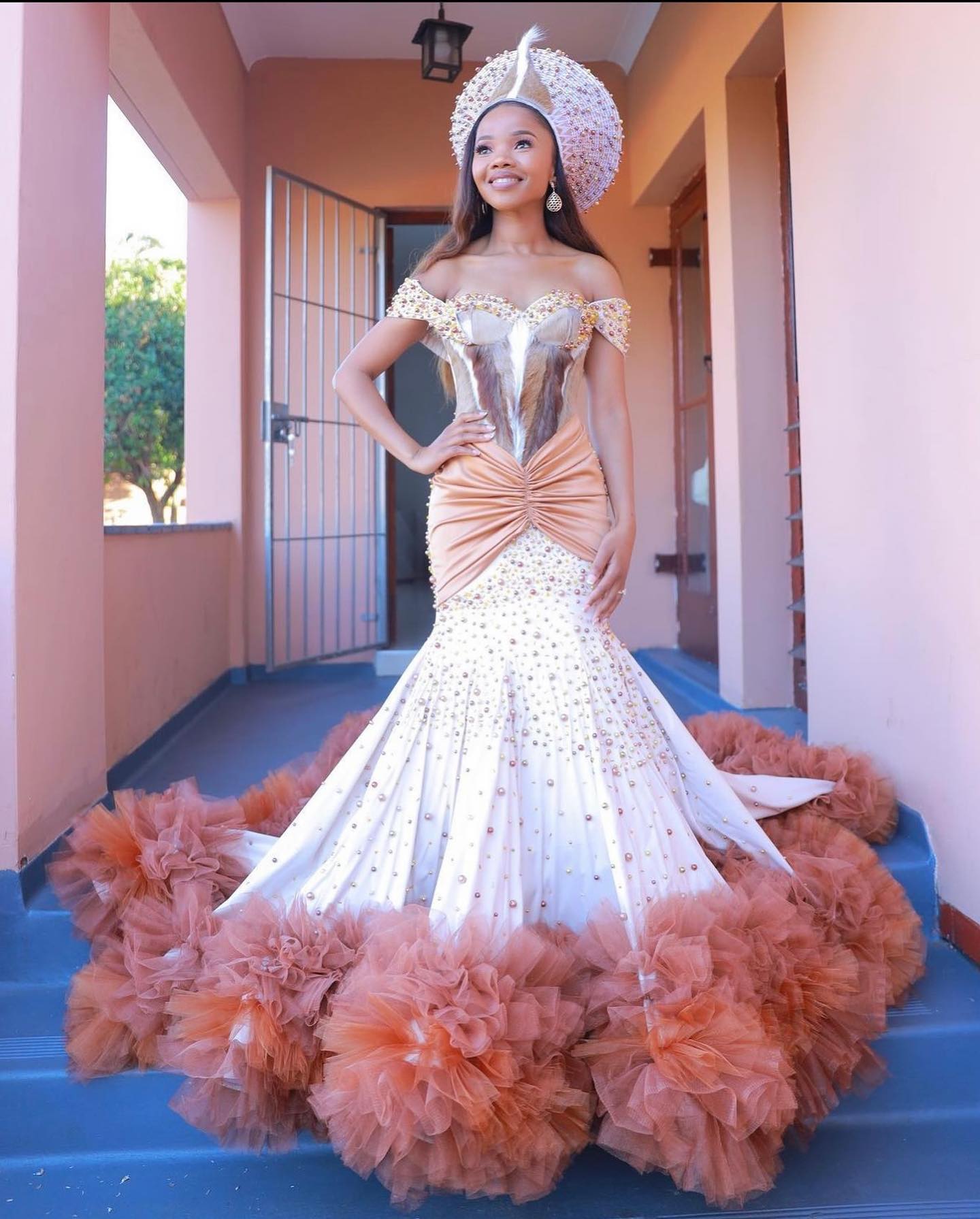
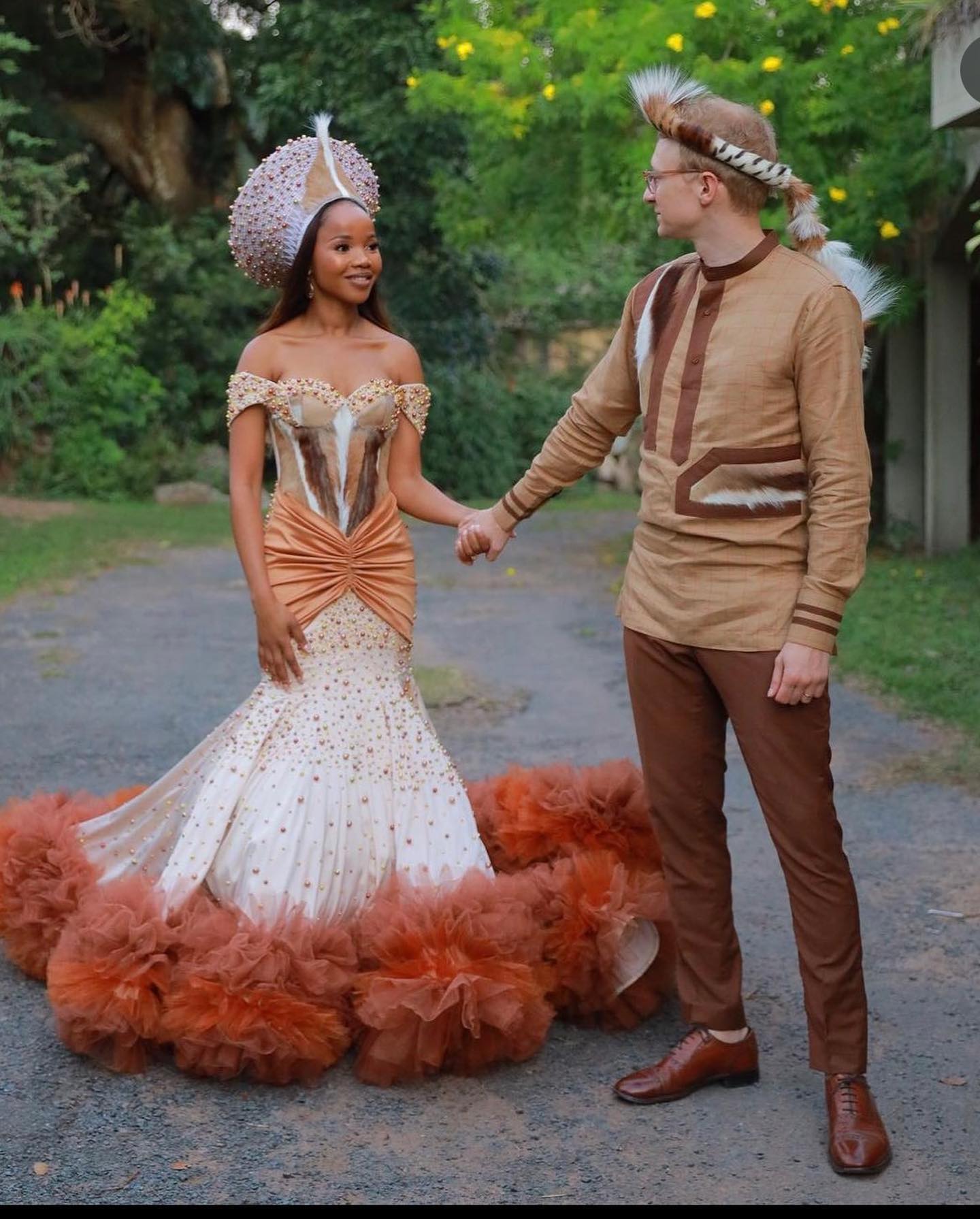
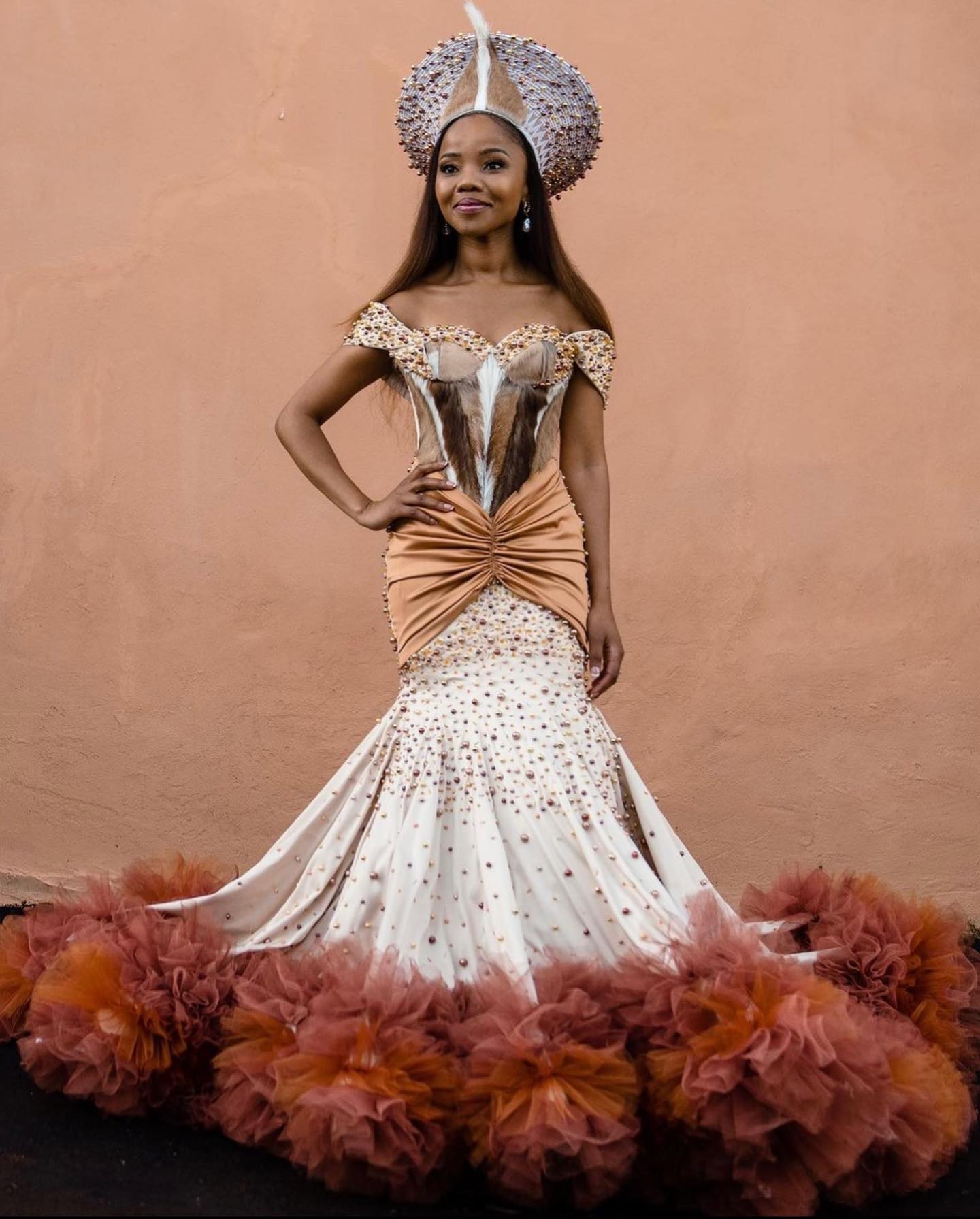
Meaning behind Zulu dress designs
The intricate designs on Zulu traditional dresses have symbolic meanings. These designs often depict elements from nature, such as animals or plants, and represent various aspects of Zulu traditions, beliefs, or historical events. They are a way for Zulu women to express their cultural identity and showcase their heritage.
In conclusion, Zulu traditional dresses are not just beautiful garments; they are an important part of the Zulu culture, representing history, beliefs, and identity through vibrant colors and intricate designs.
Xhosa Traditional Dresses
The vibrant colors and intricate designs of South African traditional dresses are truly mesmerizing. Among the many traditional dress styles in South Africa, Xhosa traditional dresses stand out for their unique patterns and symbolism.
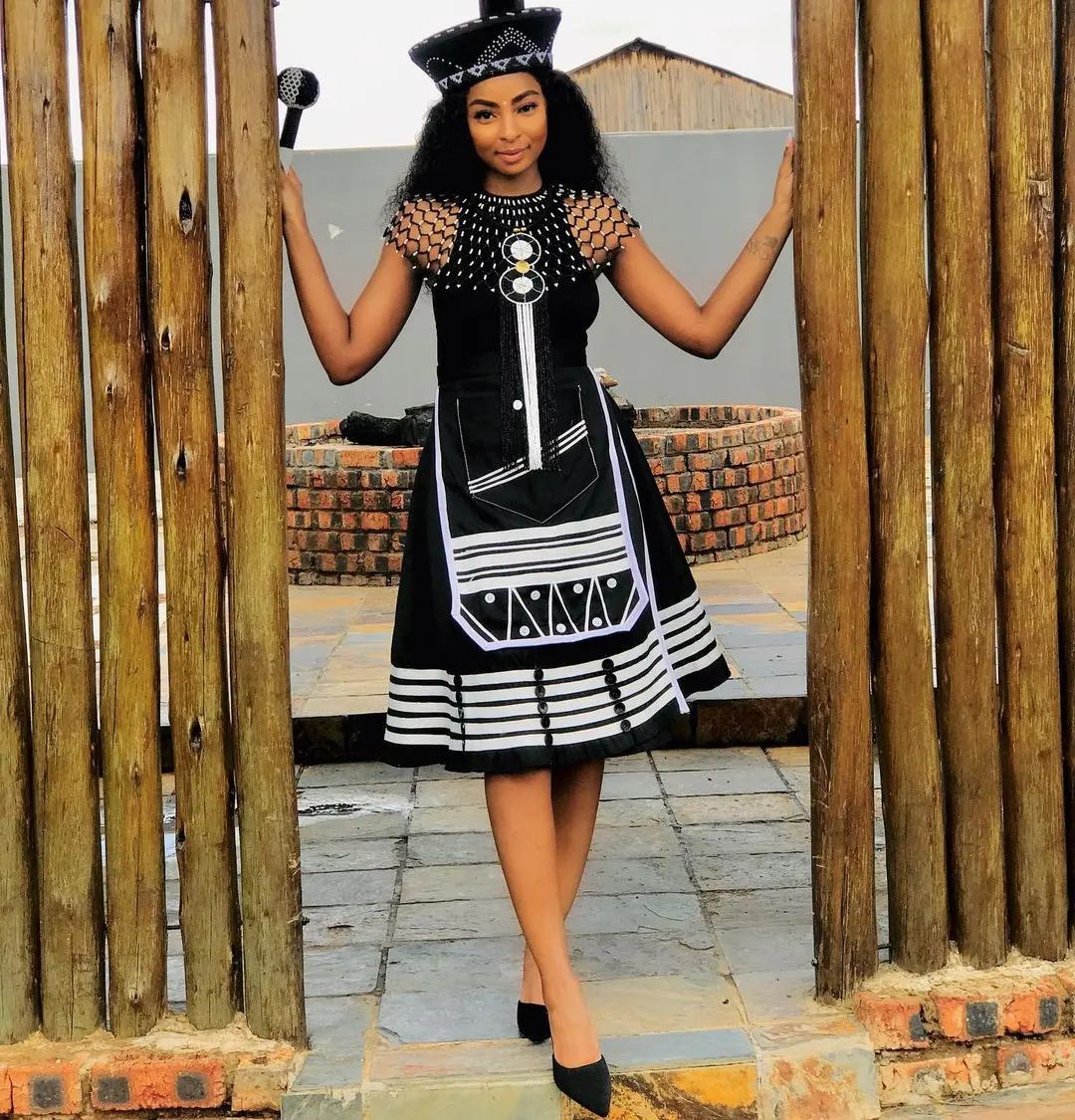
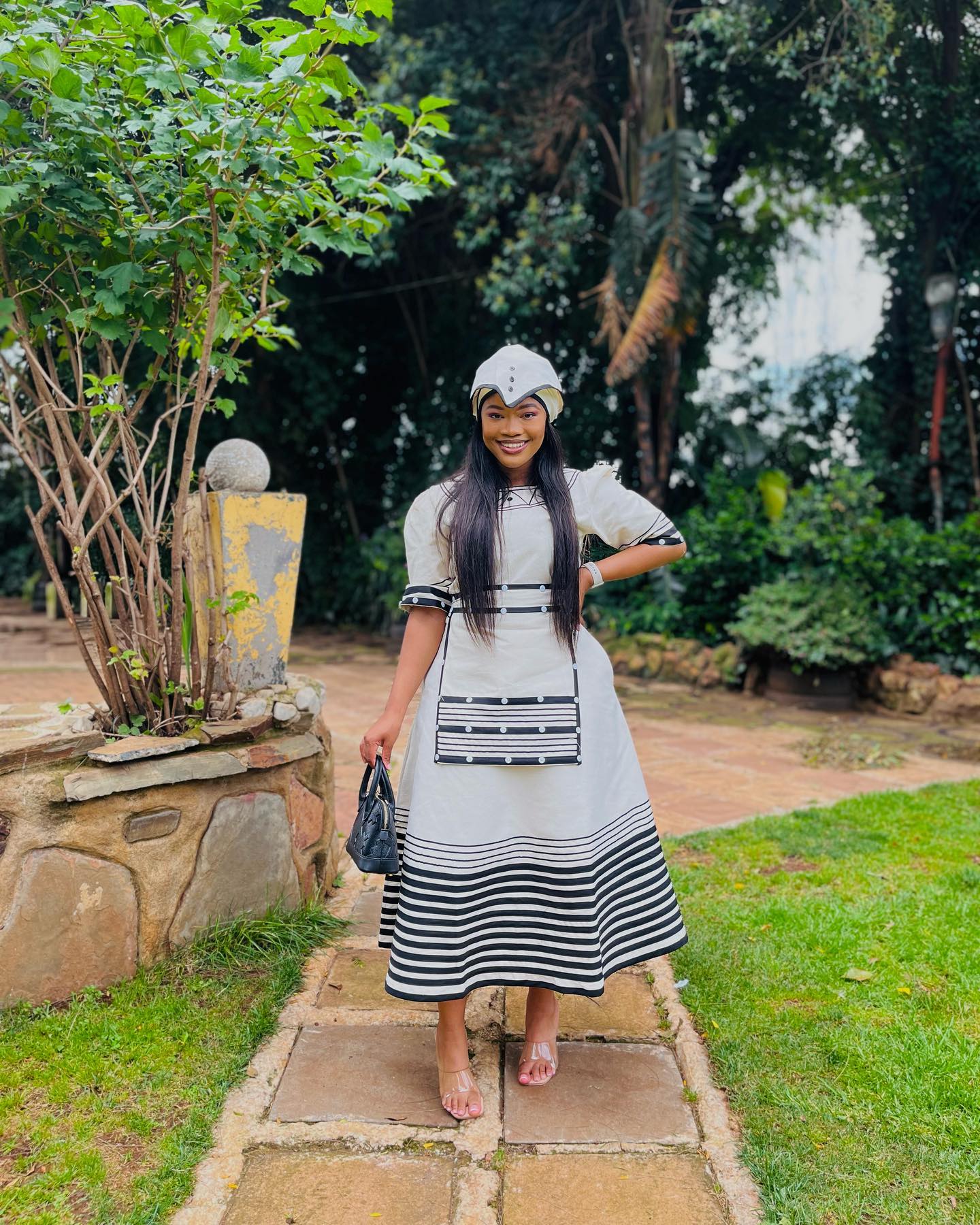
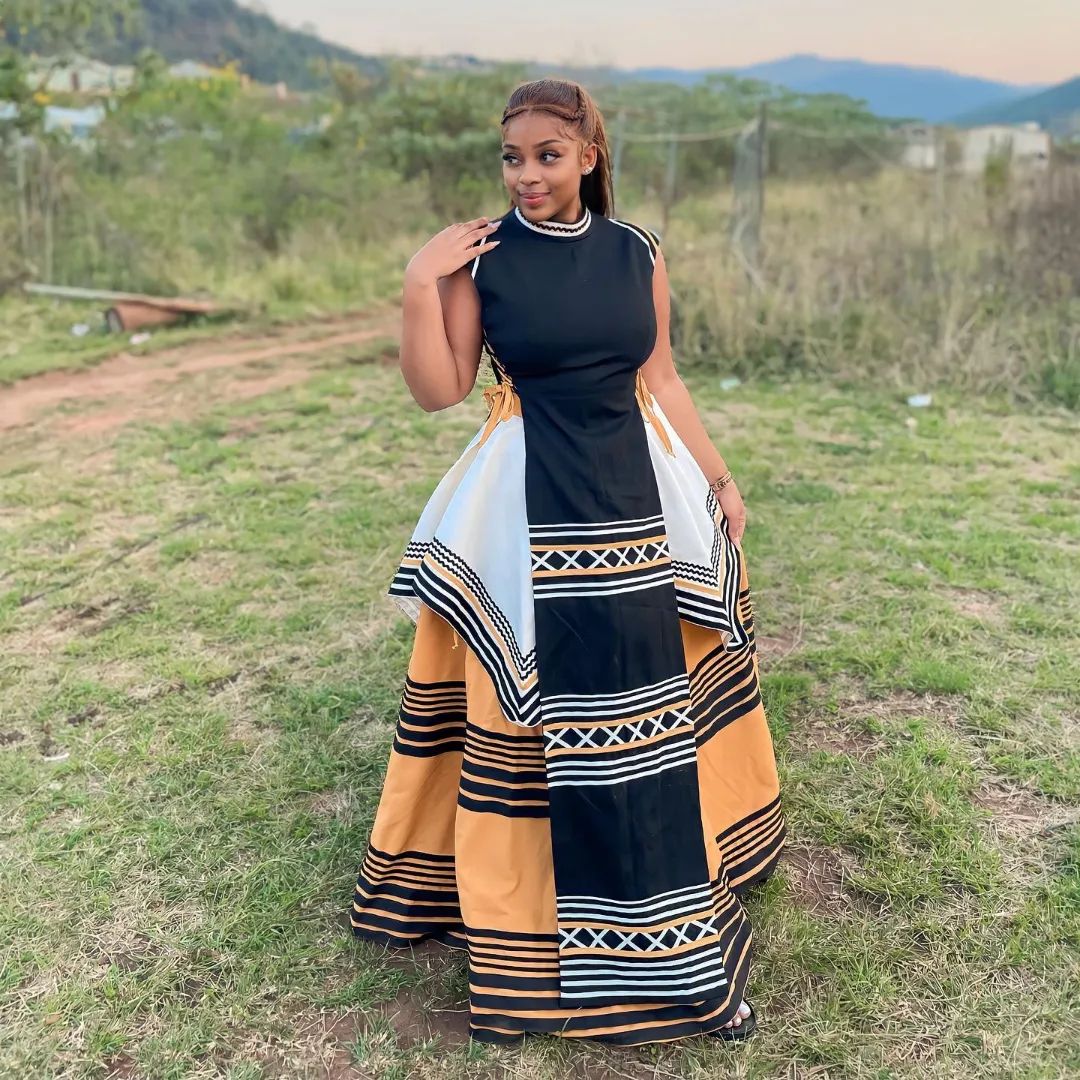
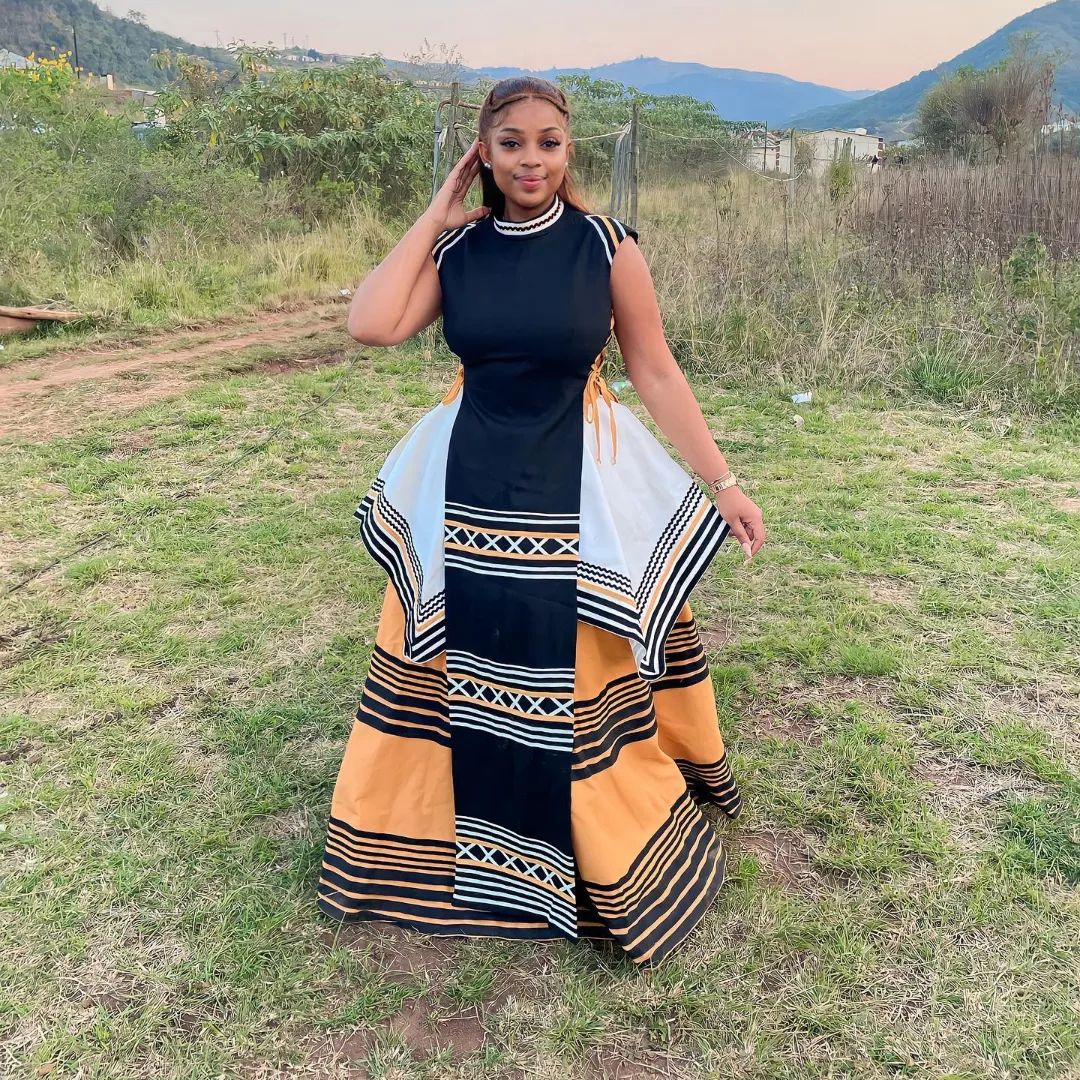
Xhosa traditional dress styles and patterns
Xhosa traditional dresses are known for their bold and vibrant colors, ranging from bright reds, blues, and yellows to eye-catching prints. These dresses often feature geometric patterns and intricate beadwork, creating a visually stunning ensemble.
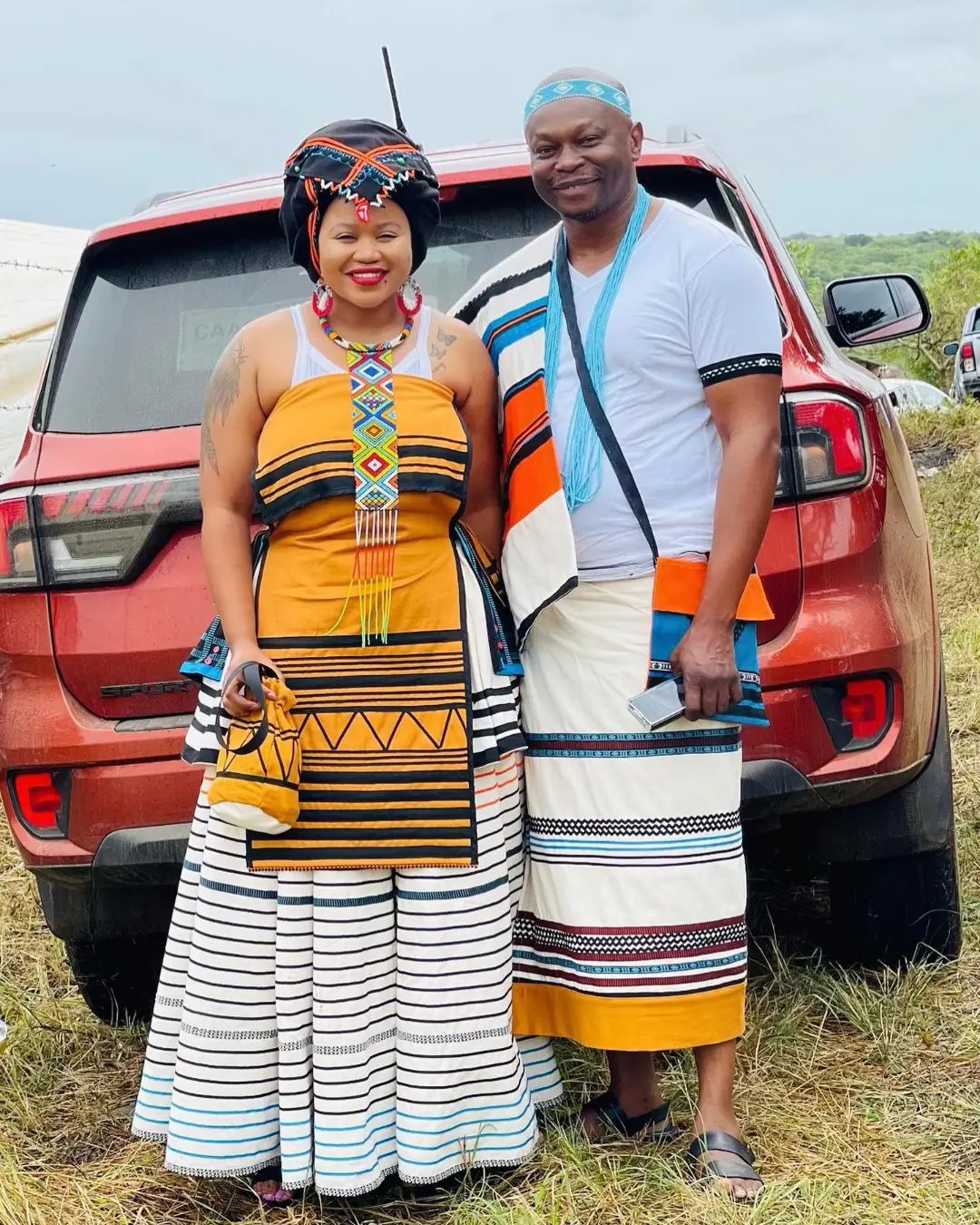
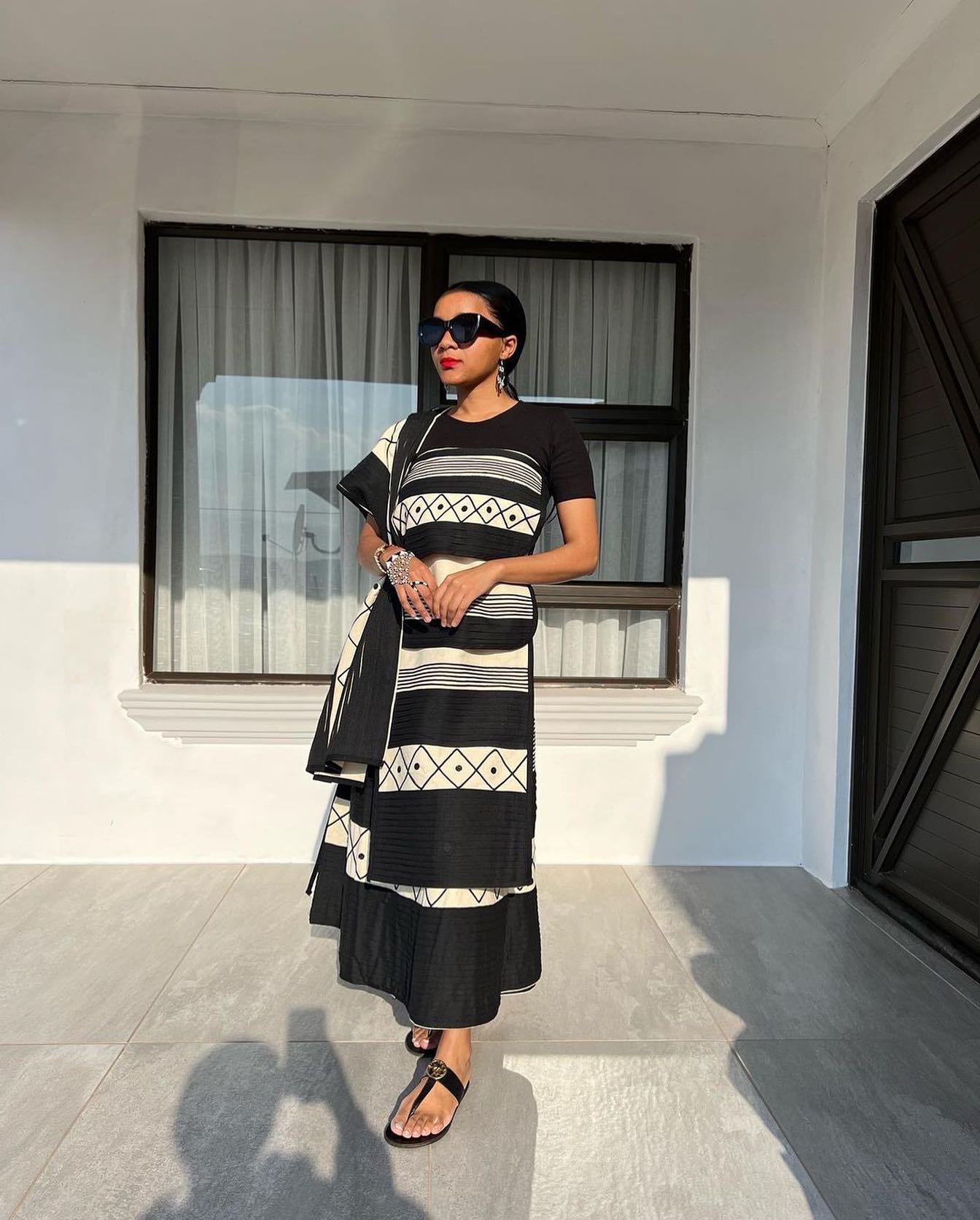
Symbolism in Xhosa dress designs
The designs on Xhosa dresses often have deeper meanings. They can represent cultural heritage, social status, or personal identity. Symbols such as animals, plants, or abstract shapes are used to depict specific messages or experiences.
Wearing a Xhosa traditional dress is not only a celebration of African culture but also a way to express artistic creativity. These dresses showcase the rich history and traditions of the Xhosa people while embracing the beauty and diversity of South Africa.
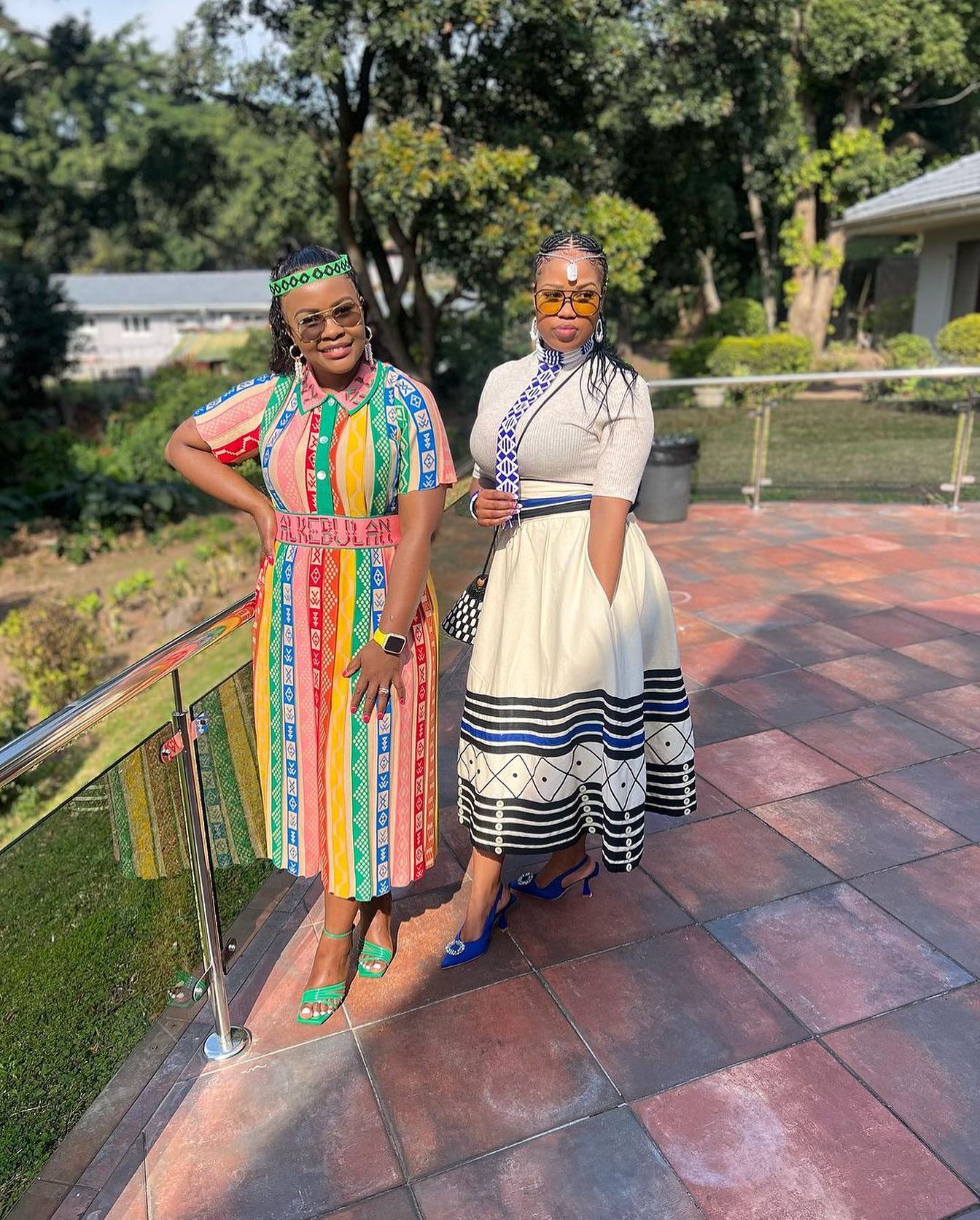
Ndebele Traditional Dresses
The vibrant colors and intricate designs of South African traditional dresses, particularly those of the Ndebele tribe, have captivated people worldwide. These dresses are not just garments but a reflection of their rich cultural heritage.
Ndebele traditional dress colors and motifs
Ndebele traditional dresses are known for their bold and vibrant colors, including red, yellow, blue, and green. These colors hold significant meaning within the Ndebele culture. The dresses also feature intricate geometric patterns and motifs, which are meticulously hand-painted or embroidered onto the fabric. These designs showcase the artistic talent and attention to detail of the Ndebele people.
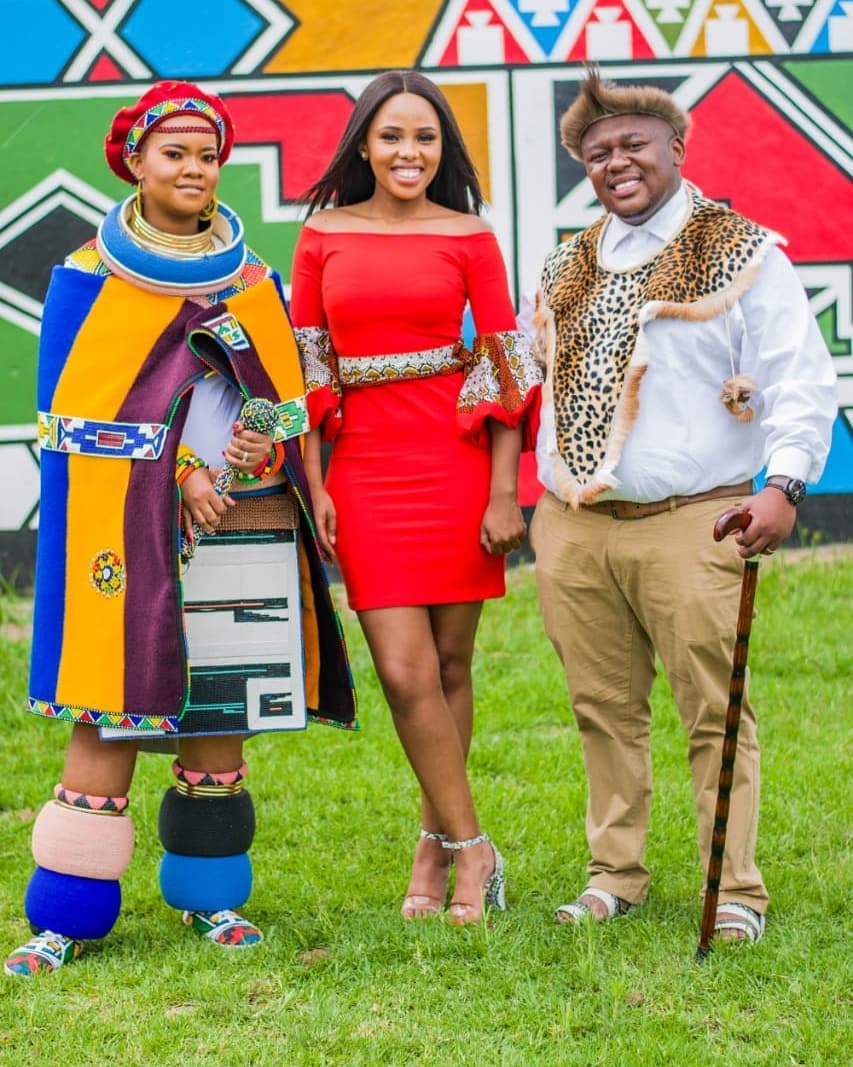
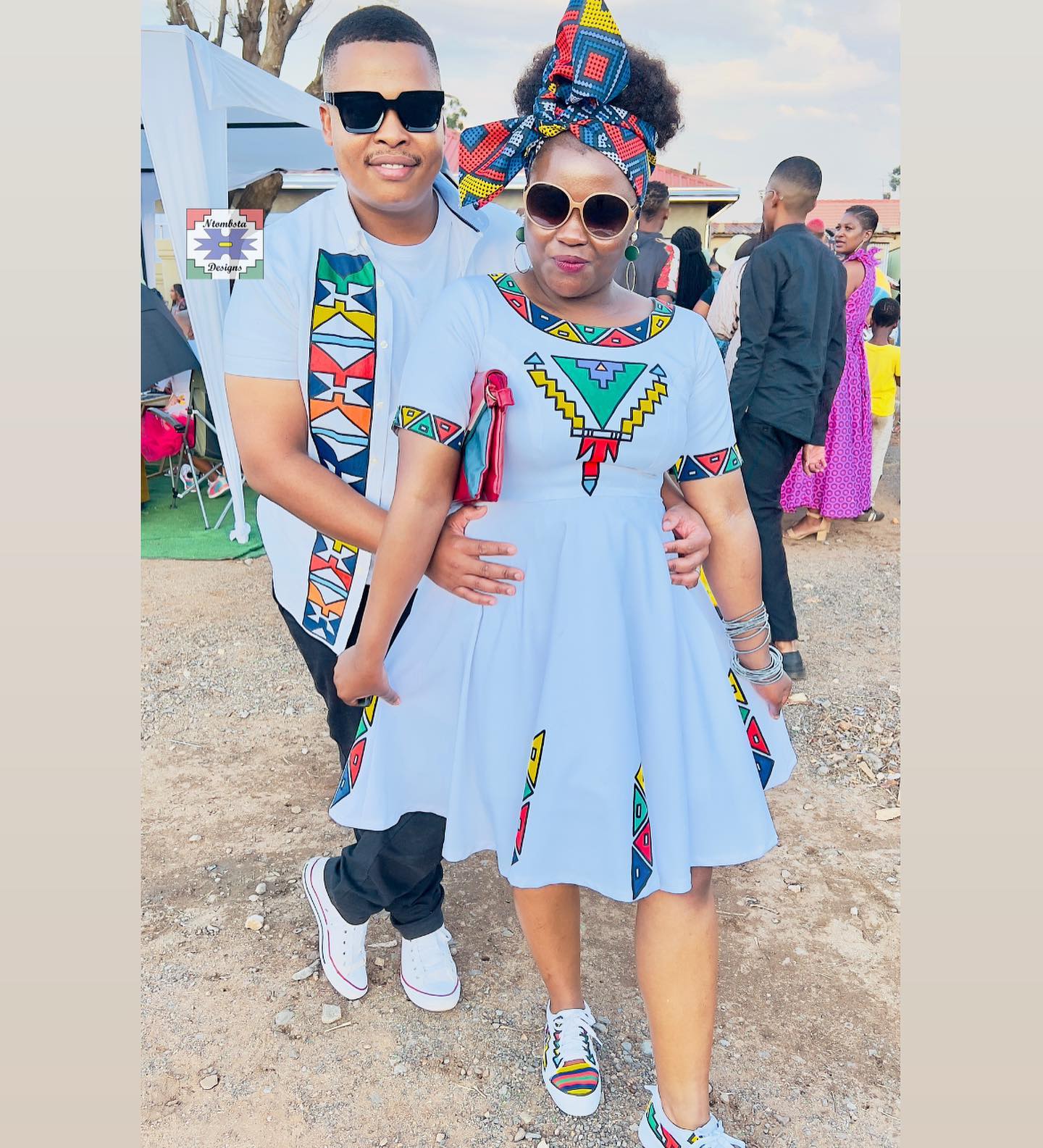
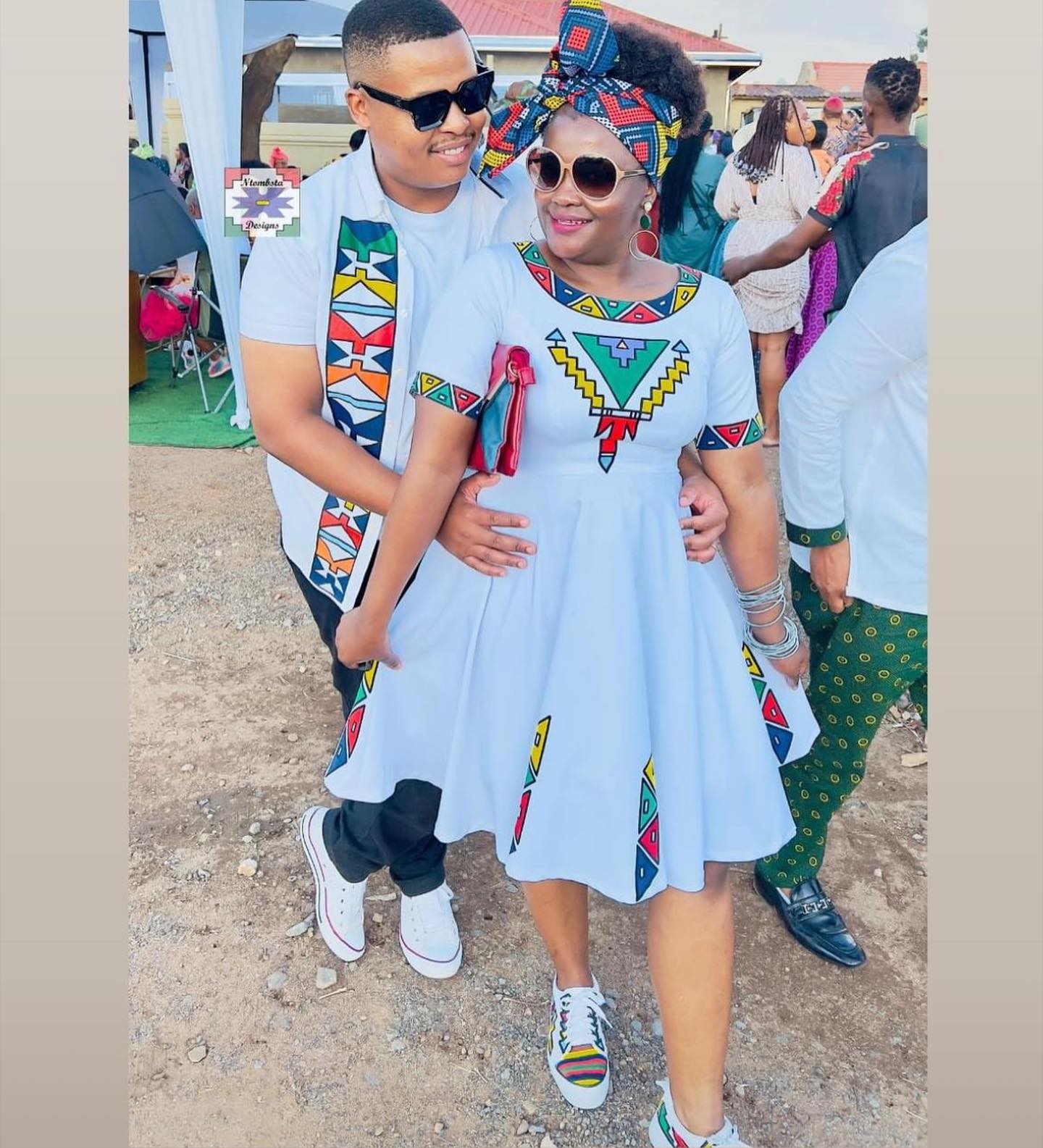
Traditional Ndebele dress is an art form
The traditional Ndebele dress is more than just a piece of clothing; it is considered an art form. Each dress tells a story and represents the identity and status of the wearer. The vibrant colors and intricate designs are symbols of their cultural pride and heritage. The artistry involved in creating these dresses has been passed down through generations, preserving this unique form of expression.
These traditional dresses not only showcase the beauty of South African culture but also serve as a reminder of the importance of preserving and celebrating our diverse cultural traditions.

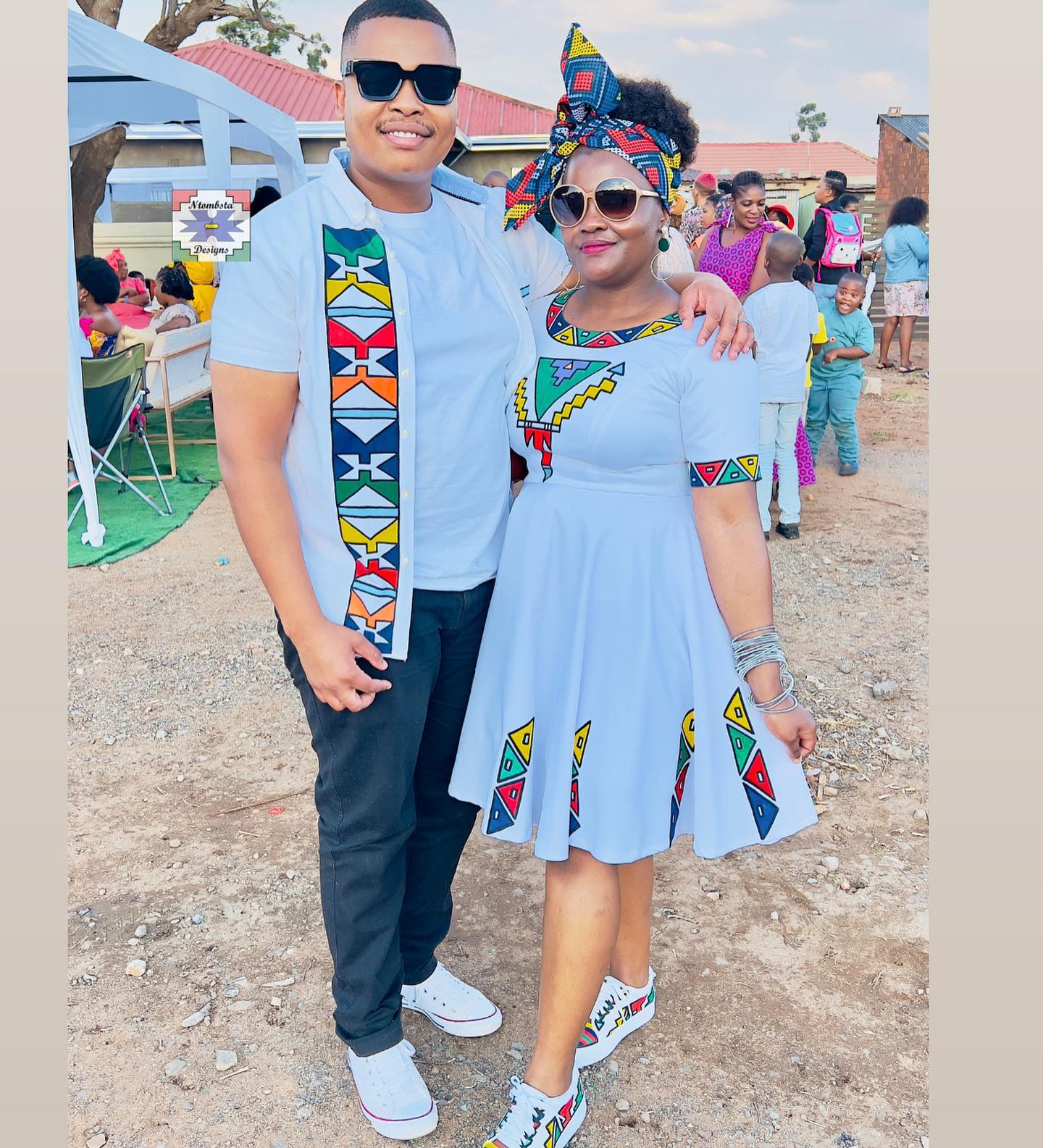
Sotho Traditional Dresses
Traditional dresses are an exquisite representation of culture and heritage. The Sotho people, a Bantu ethnic group in southern Africa, showcase their vibrant colors and intricate designs through their traditional attire.
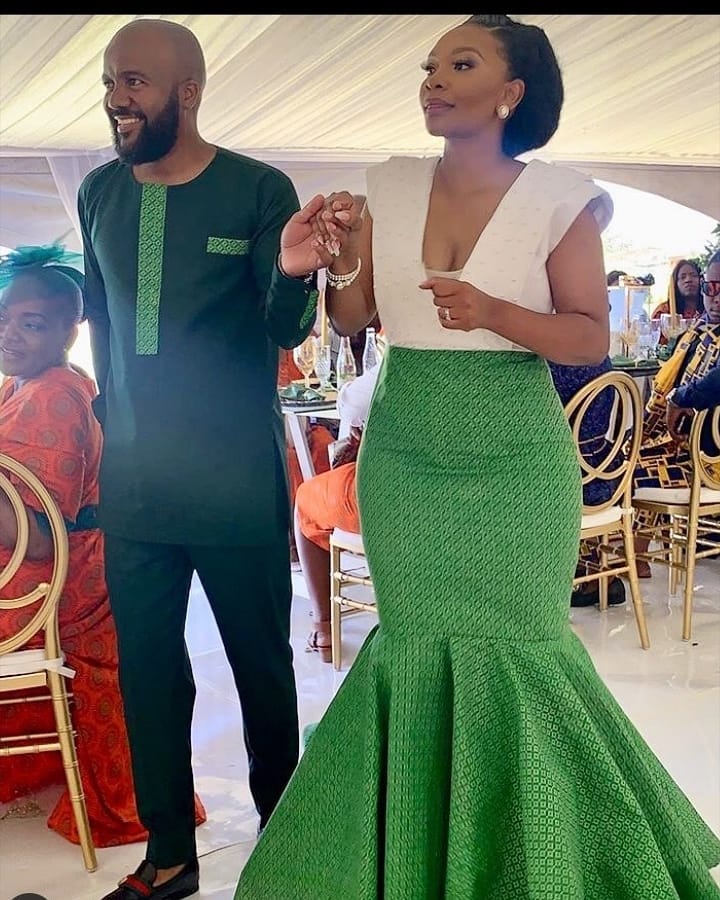
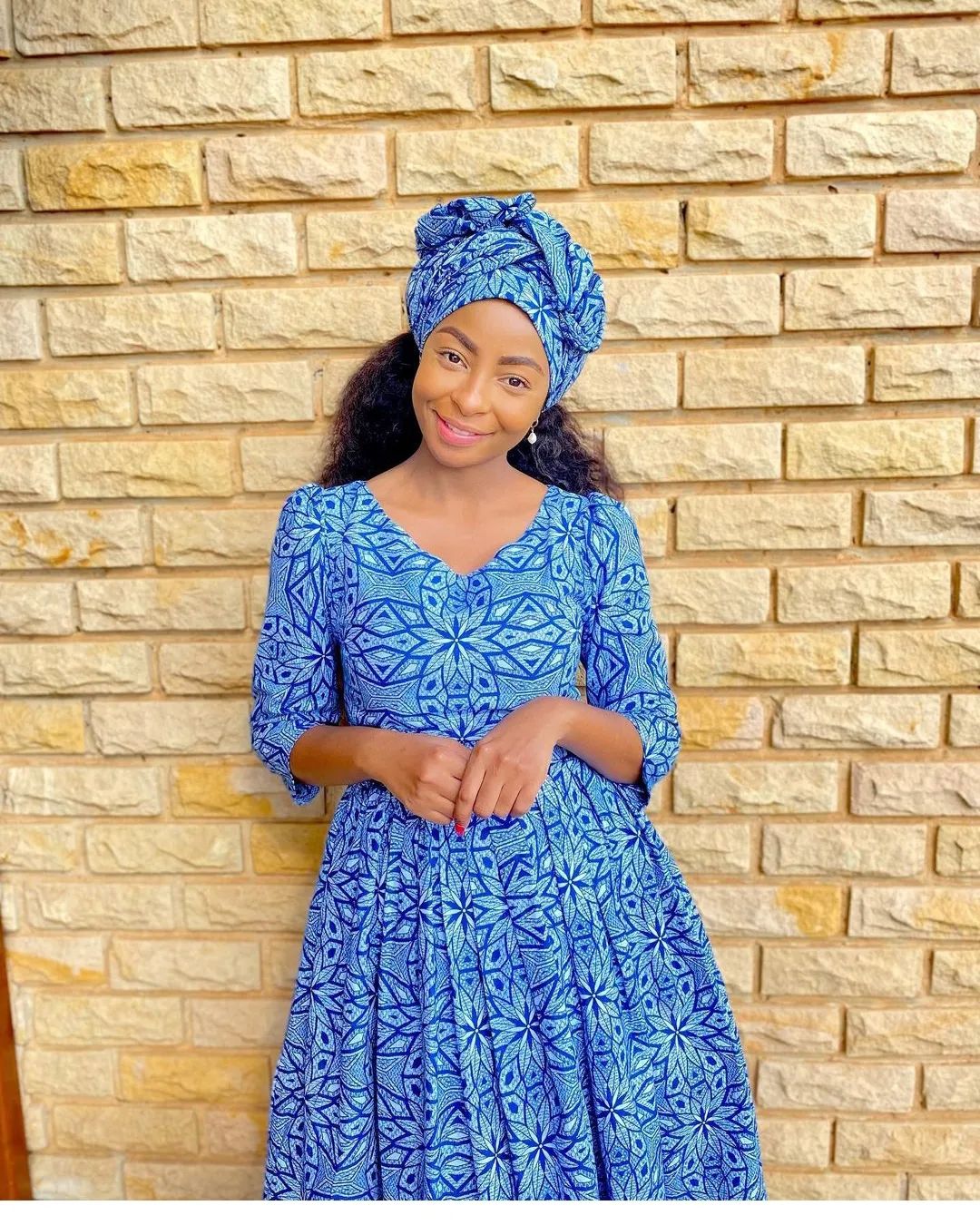
Sotho traditional dress styles and embroidery
The Sotho traditional dresses feature eye-catching designs and bold colors. These dresses are known for their elegant embroidery, which adds a touch of sophistication. The intricate patterns are meticulously created by skilled artisans, showcasing the rich artistic traditions of the Sotho culture.
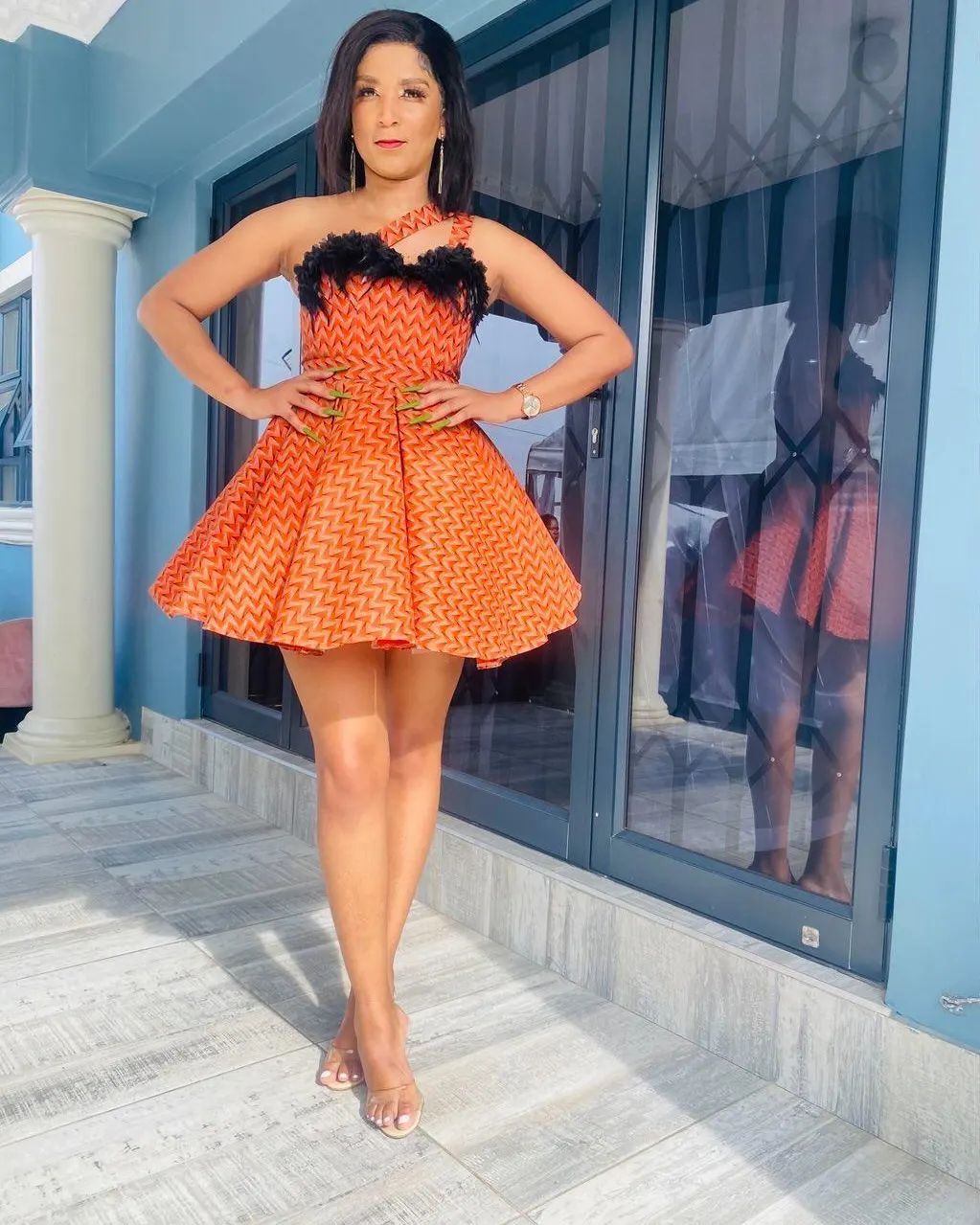
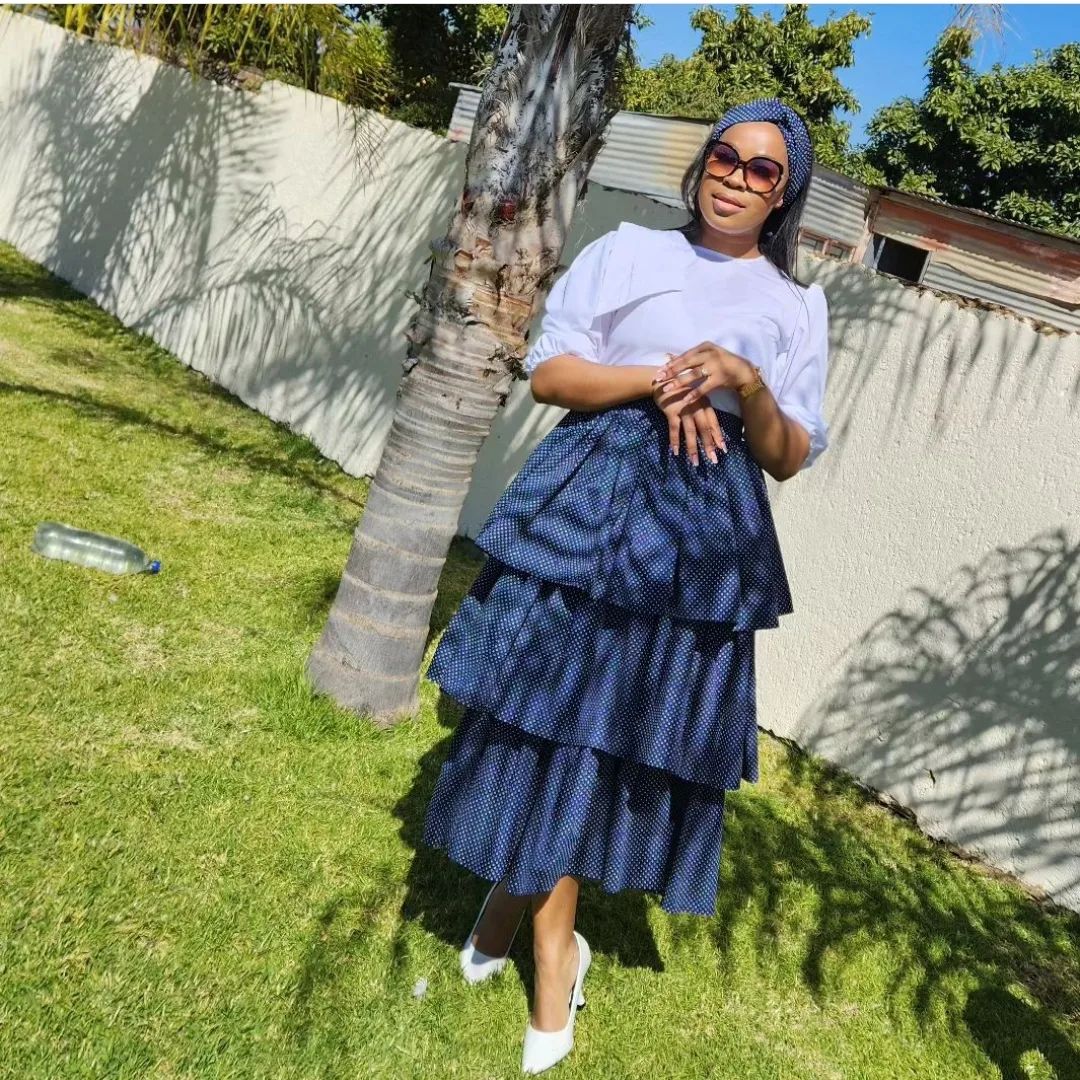
Influence of Sotho culture on dress designs
Sotho culture plays a significant influence on the design and style of traditional dresses. The dresses often incorporate cultural symbols and motifs that hold deep meaning within the Sotho community. These designs not only reflect their cultural identity but also tell stories of their history and traditions.
The vibrancy and intricacy of South African traditional dresses, particularly in the Sotho culture, make them stand out as unique artifacts of cultural expression. The fusion of colors and the attention to detail make these dresses a true epitome of artistry and pride for the Sotho people.

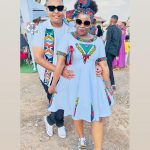
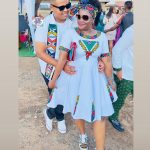


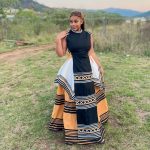




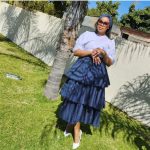
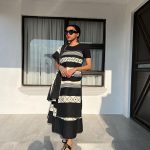
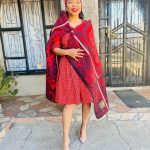

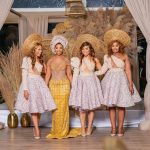
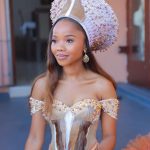

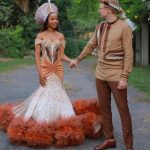

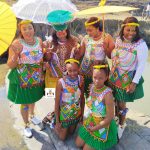
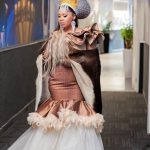



Comments are closed.